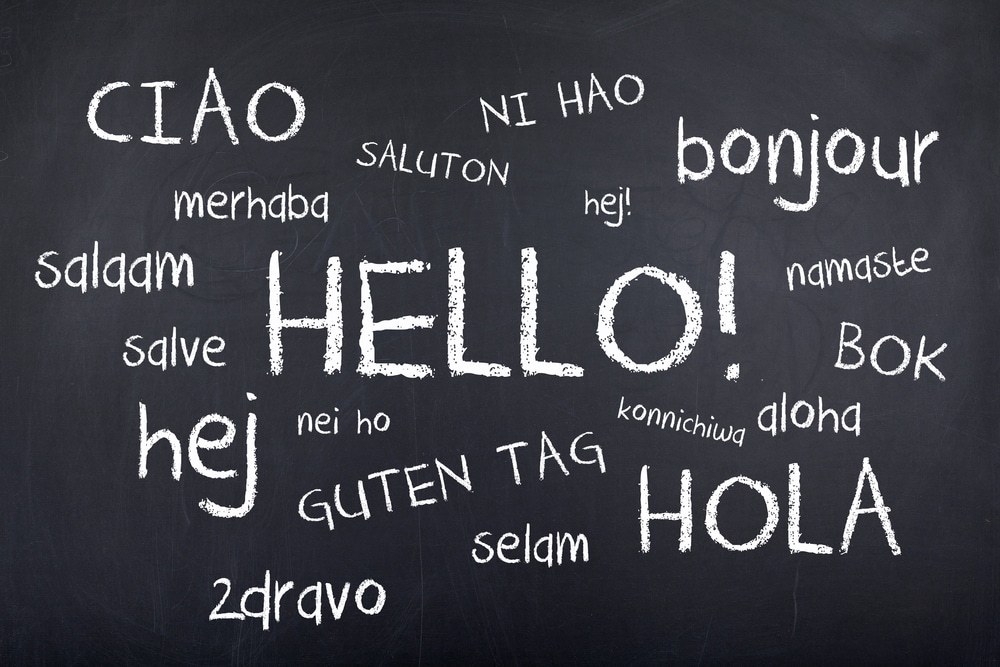How to provide multilingual customer support
More than 4.5 billion people – nearly 66% of the world’s population – now have internet access. That’s a lot of different languages spoken by your world-wide customers! How are you going to communicate with them?
What is multilingual customer service?
Providing multilingual customer service means that you ensure that all of your customers, no matter where they are and what language they speak, have full access to all your services and products.
It means that you can answer all their questions, give them the help they need, and solve their problems in the language of their choice. By doing so you improve their customer experience, and make them feel valued and appreciated.
Why is offering customer support in multiple languages a good idea?
The benefits of providing multilingual customer support are significant. Most companies have realised that they simply can’t afford to give poor customer service because it costs them too much in lost customers and consequently lost revenue.
Most businesses realise that they need to innovate to meet customer expectations by providing great CX across many platforms. These include live chat, online self-service, emails, social media interaction, text, and telephone support.
Providing multilingual customer support can:
- Boost customer loyalty – even if something does go wrong, it’s easier for the customer to communicate with you to solve the issue than go to a competitor who doesn’t offer service in their native language.
- Give you a competitive edge over brands that don’t offer multilingual support.
- Make it easier to collect meaningful feedback, make additional sales, and increase your conversion rate
- Give you access to a wider target audience and new potential markets
Related content: Tips for expanding your business into Spain
What is involved in providing multilingual customer support?
Understand your customers, their expectations, and their culture
Knowing your customers and markets well are crucial in order to satisfy customer needs, wants and expectations. You need to look at the areas involved and decide which languages are spoken in your high-priority markets (those with your greatest ROI potential). You have to include those languages in your support functions.
However, you also have to research the communication styles and cultural norms that apply to specific countries and regions. You have to draw up relevant communication guidelines for your agents and translators spelling out the do’s and don’ts that apply to a specific culture. For instance, using a customer’s first name is fine in America, but is regarded as disrespectful in Japan.
Ensure your product and help centre localisation is spot-on
If your product localisation is ‘off’ you will be out of sync with your target audience. This also applies to your help centre. You also need an excellent knowledge base for your customer service agents to draw on when they’re interacting with customers.
Your help centre documentation must also be available in the relevant languages so our customers can practise self-service in they prefer. This is particularly important with high-priority content.
It is a good idea to incorporate relevant and culturally accurate visuals into that documentation. Ensure that all your support documentation, how-to guides, video tutorials and FAQs are professionally translated to ensure excellent quality.
Hire your customer service agents wisely
It’s vital that you employ multilingual customer support agents who can speak to customers in their preferred languages. They also need to be ‘people persons’ with good communication skills. It is also important to have some professional translators on hand.
Your chatbot must be multilingual and localised
Chatbots offer an excellent way for customers to help themselves. However, it must be equipped to communicate in the relevant local languages. Also make a point of keeping its language simple and culturally appropriate. This also goes for any images, emojis and GIFs that it is programmed to use.
Invest in a good TMS
A translation management system provides you with one centralised platform to automate, manage, and track your localisation workflow by connecting directly with your customer service software. It consolidates your data, and gives you a clear picture of how your multilingual support function is doing. It also enables you to access technologies like machine translation, thus keeping costs down.
How to provide customer support in multiple languages
The first step may well be taking an honest look at your business capacities and deciding whether your business is able to provide multilingual customer support. If you are a small business, it might not be realistic to do so. If it’s a question of adding one language, like Spanish in America, you could probably do it easily enough in-house.
However, if you operate in Europe or have a truly global business, it might become problematic. You would need to offer multiple languages, so it becomes a great deal more complicated.
Related content: Tips to expand your business to France
Hiring a few freelancers who speak the language as agents might not suffice to ensure that you offer a really professional service. It might well be time to turn to the professionals and outsource your multilingual customer support function.
We can help! At Digital Customer Care Company, we offer our wide range of international customers support services in English, Dutch, French, Spanish, German, Italian, Portuguese, and Arabic. We are also available to consult with you if you are uncertain as to which languages you should add to your customer support function.
Supporting your global customers effectively is always an excellent investment. A strong customer support strategy, closely designed to supply the multilingual needs of your global audiences, will keep your customers happy – and coming back for more!



